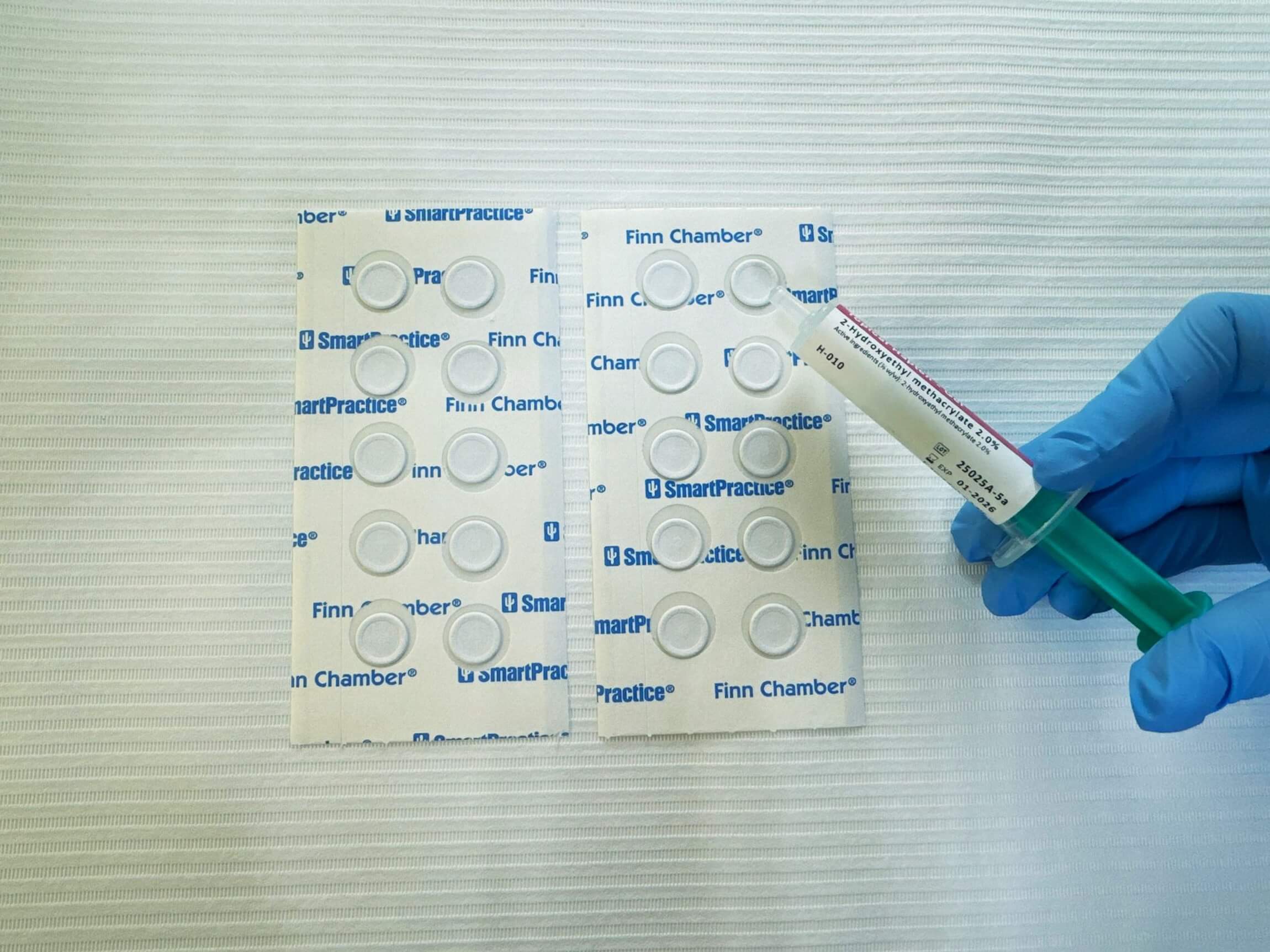
Allergy skin tests
At DAGDERM clinics, we offer specialist patch (epidermal) tests, a key method in contact allergy diagnostics. It is a non-invasive test that can accurately identify substances that cause allergic reactions on the skin. We perform tests using the Polish PST-1000 Basic Series, which includes the 25 most common allergens found in Poland.
What are patch tests?
Patch (epidermal) testing is a non-invasive method of contact allergy diagnostics. They allow to precisely determine which substances cause sensitization reaction in patient’s skin. At Dagderm, we conduct patch tests based on the PST-1000 Polish Basic Series, which includes the 25 most common allergenic contact substances found in Poland.
These tests are particularly useful when allergic symptoms appear late – up to 72 hours after contact with the allergen.
The most commonly tested allergens in DAGDERM
In our clinic, we diagnose allergies to a wide range of allergenic substances. The most common allergens include:
- Metals: nickel, chromium, cobalt, palladium
- Preservatives: formaldehyde, parabens, methylisothiazolinone
- Fragrances: geraniol, eugenol, coumarin, cinnamaldehyde
- Medicines and cosmetic ingredients: neomycin, balsam of Peru, lanolin
- Industrial substances: epoxy resins, rosin, thiurams
For whom are patch tests indicated?
We perform patch tests on patients who present with:
- Chronic, itchy skin lesions
- Allergic contact dermatitis
- Atopic dermatitis (AD)
- Hand eczema, foot eczema, or nummular eczema
- Seborrheic dermatitis
- Photodermatosis (sun allergy)
- Suspected occupational allergy (contact with chemicals, metals, cosmetics)
- Difficulties in identifying the sensitizing substance
How is the test performed?
The patch test involves applying special patches containing allergens to the patient’s back. The procedure takes place in several stages:
- Application of the test: Patches with allergens are applied to clean, dry skin on the back.
- First reading: After 48 hours, the patches are removed and the skin reaction is evaluated.
- Second reading: The final assessment is made after 72 hours.
During the test, patients should avoid bathing, sweating, sun exposure, using cosmetics on the test area, and other factors that may affect the results.
Patch tests are recommended when other diagnostic methods (e.g., prick tests) do not provide conclusive results.
Contraindications to patch tests:
- Active skin infections or infectious diseases
- Pregnancy and lactation
- Antibiotic therapy (up to 2 weeks after the end of treatment)
- Use of corticosteroids and immunosuppressants (up to 2–3 weeks)
- Intense exposure to UV radiation in recent weeks
- Hot weather conditions
Why choose DAGDERM?
A team of specialists
more than 50 doctors -dermatologists – venereologists.
Accessibility and location
we have 5 state-of-the-art clinics in different districts of Warsaw, so we are always close to you. We also offer quickly available appointments, even on Sundays and holidays.
Individualized approach
each patient is treated with an individualized approach, allowing the procedure to be tailored to their unique needs.
PRICE LIST
| Patch tests for contact allergies | |
| Allergic skin tests — PST-1000 | 399 PLN |


